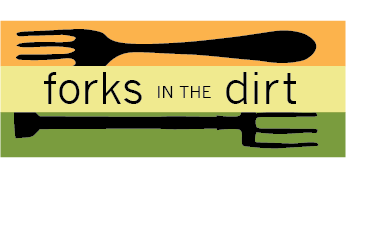
Most gardeners learn how to can and pickle as a rescue plan for all the excess ‘fruits of their labor’ about this time of year.
Since I’m no stranger to surplus I’ve been pickling and canning for a few years now. I was really starting to feel like I knew what I was doing. And wouldn’t you know it, that’s when kombucha came along (you guys, if you haven’t tried kombucha yet, just go get yourself some) and blew my mind open to the wide world of fermented foods, and now I’m hooked. In my humble opinion, sour pickles are fermented perfection.
Wait, isn’t fermented food BAD for you??
Depends…
Without getting too scientific: there’s good bacteria and bad bacteria. Properly fermented foods just give our bodies access to more of the good guys.
“Fermented foods are foods that have been through a process of lactofermentation in which natural bacteria feed on the sugar and starch in the food creating lactic acid. This process preserves the food, and creates beneficial enzymes, b-vitamins, Omega-3 fatty acids, and various strains of probiotics.” -from Wellness Mama
So, no, we’re not talking moldy food, please don’t eat that…unless you’re enjoying Brie or Camembert!
Fermented foods have been an essential part of most cooking traditions around our amazing globe for good reasons. They are a great way to preserve foods and increase their nutritional value with little effort or extra ingredients. So, from Tempeh, Miso, Sauerkraut and Kimchi and fermented/sour pickles (like the recipe coming up) to the dairy ferments of yogurt and kefir and my current favorite-Kombucha there is such a wide variety of fermented foods to choose from.
So this year I’ve just started playing with fermenting my veggies as they come in from the garden, and the flavors are tantalizing. I’ve only done straight salt ferments, although there are some foods that need a ‘starter’ (similar to the SCOBY for Kombucha). Some taste just like I used a typical vinegar brine, but with layers of subtle flavors underneath. And they are simply so much better for you than vinegar-brined versions. I’ll still be ‘putting up’ a variety of recipes that I want to keep until next spring, because fermenting/sour pickles etc. keep for a few months in your refrigerator, not 12 months in your pantry. And certain recipes, like my favorite Zucchini Sweet Relish I will honor (there is a fermented version of zucchini relish I may have to try though). But there is a growing place in my heart for fermented foods, especially these pickles.
In a conspiracy theory way, it’s really empowering to be able to take back some ownership of the food we eat. From growing seeds I saved, to preserving that food in different ways I am digging doing it my own way! But please know you can ferment any veggies, the fresher the better- so it might be a good time to hit up the farmer’s market and get a discount price on some bulk cucumbers or beans 😉
Anywho- here’s the recipe I *mostly* followed to jump into fermented pickles. This is taken straight from the AMAZING Nourished Kitchen website (get ready to have your mind blown with traditional food recipes that taste sublime!)
1 gallon unwaxed pickling cucumbers, approximately 8 pounds
2 heads flowering dill
2 large bulbs garlic
3 tablespoons pickling spice
1 horseradish leaf
6 tablespoons finely ground sea salt
3 quarts filtered water
What actually happened in my kitchen was more like…

I had 7 happy cucumbers hanging in my fridge which I soaked in ice water while I washed out my gallon glass jar, added all the spices in double the amount (except for pickling spice- I just threw in some whole cloves and a mustard seeds) and whisked the brine solution, poured on top and then tried to figure out what I had to submerge all the stuff inside the jar!?! This is my m.o. and it drives my husband crazy. I like having to think on my feet, and I lucked out again. I filled a quart jar that had just been sterilized (see I said I lucked out) with water and it kept all but the garlic bits submerged. Whew! I threw a dish towel over my contraption and rubber-banded it into place.
10 days later I had some tasty, good for my gut sour pickles!

I also had grown a little Kahm yeast – which I was 100% thought was mold until I read about it on Phickle (which wins for best info and best blog name). After understanding fermentation a little better, I Kahmly skimmed off the white yeast and proceeded with my ferment. There’s a picture of very first Kahm, it’s the white stuff floating innocently on the top.
So if you find yourself not wanting to heat up your kitchen with a canning project but have some extra veggies, at least think about making fermented (or sour) pickles/veggies out of them. Your gut AND your taste buds will thank you!

If you want to see my list of to do’s read about more ways to ferment your garden’s bounty from Cultures for Health. So many recipes, so little time.
Hope I get a few more people to Dig In to fermenting some foods! And if you’ve been enjoying your own ferments- please tell me what your favorite recipes are- I’m in my experiment mode!
Dig In!
Michelle
















I will NOT be tryin this myself as I am not a big pickle fan, but I truly admire your efforts. You are so creative in so many ways!
LeAnne – HA, pickles aren’t for everyone, I’ll admit it. Thanks for your gracious creativity comment- mostly I just have to come up with some way to use all the food I grow 😉 Take care and enjoy your summer! Michelle